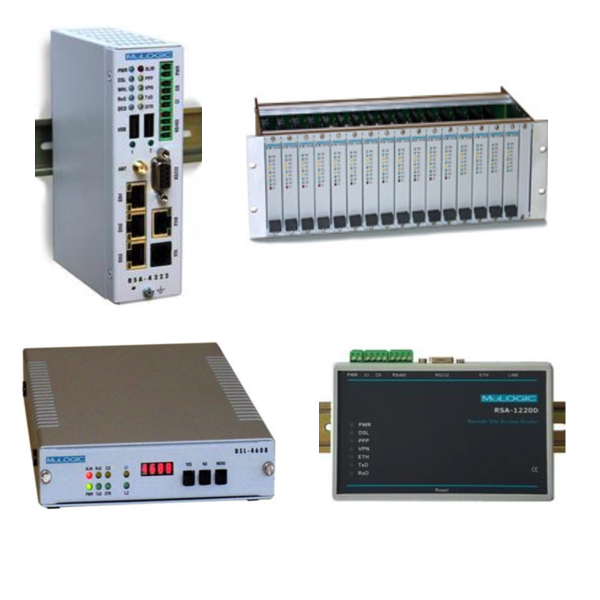Industrial Modems & Routers

Industrial modems and routers play a critical role in connecting automation systems, controllers, and industrial networks to local and wide-area communications. Industrial modems receive data from an Internet Service Provider through phone lines, coaxial cables, fiber optics, or cellular networks and convert it into digital signals. Industrial routers then distribute this data to connected devices using Ethernet, serial communication, or wireless connections, enabling reliable data exchange across industrial environments.
These devices are engineered for dependable operation in demanding conditions where stability, uptime, and secure communication are essential. Transmission speed and reliability depend on the modem and router design, communication medium, and network architecture. Industrial-grade construction ensures consistent performance in applications such as manufacturing automation, remote monitoring, utilities, transportation, and infrastructure systems.
RSP Supply offers a wide range of industrial networking solutions, including DSL modems, leased line modems, and industrial cellular routers. Available options support Ethernet and serial interfaces, secure VPN connections, dynamic routing, and remote access. Trusted manufacturers such as Mulogic and Phoenix Contact provide networking equipment designed to support long-term industrial communication needs.
FAQs
Q: What is the difference between an industrial modem and an industrial router?
An industrial modem connects to an external network, such as DSL, fiber, or cellular, and converts the signal into digital data. An industrial router distributes that data to connected devices using Ethernet, serial, or wireless communication.
Q: What types of internet connections do industrial modems support?
Industrial modems can support DSL, VDSL, leased line, fiber, coaxial, and cellular connections depending on the model and application requirements.
Q: What is an industrial leased line modem used for?
Leased line modems are used for private, dedicated point-to-point communication channels supplied by a carrier. They provide fixed, reliable data transfer between controllers or computers over long distances.
Q: When are industrial cellular routers used?
Industrial cellular routers are ideal for remote or mobile locations where wired internet access is not available. They connect directly to cellular networks and often include Ethernet, serial ports, VPN security, and I/O features.
Q: Are industrial modems and routers suitable for harsh environments?
Yes. Industrial networking equipment is designed to operate in environments with temperature extremes, electrical noise, vibration, and other challenging conditions commonly found in industrial settings.
Why Buy Industrial Modems & Routers from RSP Supply
RSP Supply offers a broad selection of industrial modems and routers to support Ethernet and serial communication across automation, monitoring, and control applications. Our product lineup includes DSL, leased line, and cellular networking solutions from trusted manufacturers such as MuloLogic and Phoenix Contact. Customers rely on RSP Supply for dependable industrial networking components, knowledgeable technical support, and solutions built for long-term performance in critical systems.

